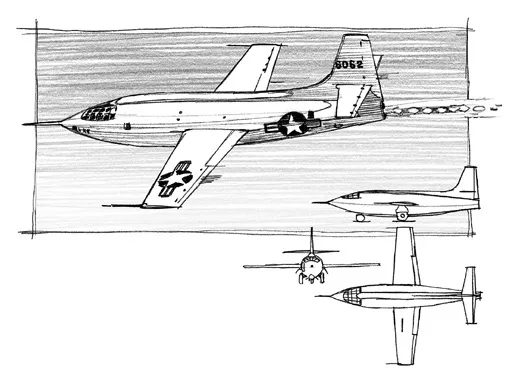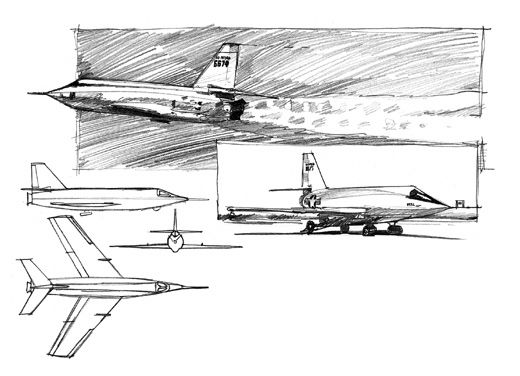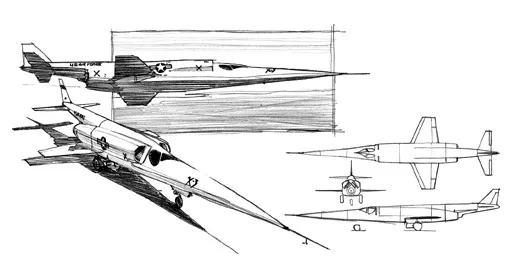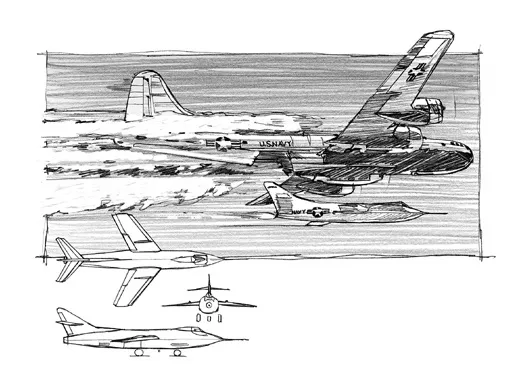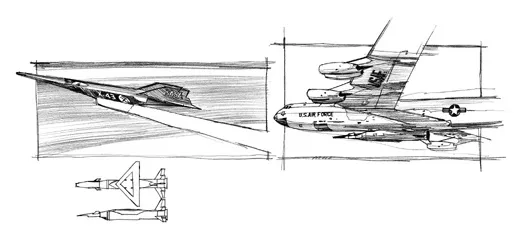The Need for Speed
How six X-planes took aviation to 7,000 mph.
/https://tf-cmsv2-smithsonianmag-media.s3.amazonaws.com/filer/xs-388-nov07.jpg)
Six airplanes, one mission: Fly faster.
Main image: Bell XS-1
The first X-plane, the Bell Experimental Sonic (XS)-1, explored transonic and low supersonic speeds. On October 14, 1947, the X-1 reached Mach 1.06, the first aircraft to exceed the speed of sound in controlled level flight. Number built: 3. Total flights: 157. High point: Mach 1.45 (960 mph). Power: Reaction Motors XLR-11-RM-3 rocket, 6,000 lbs. static thrust. A derivative aircraft, the X-1A, reached Mach 2.43 in December 1953. The X-1 pioneered the movable horizontal stabilizer — the “all-moving tail” — a design that would appear on all Century-series fighters/interceptors of the 1950s and ’60s.
Small images (left to right):
Bell X-2
The X-2 explored high-Mach, swept-wing flight. It incorporated high-strength steel-alloy construction (stainless steel and copper-nickel alloy) to deal with aerodynamic heating. Number built: 2. Total flights: 17. High point: Mach 3.19 (2,094 mph), September 1956. Power: Two-chamber Curtiss-Wright XLR-25 throttleable liquid-fuel rocket; variable thrust, 2,500 to 15,000 lbs.
Douglas X-3
The Stiletto was designed to explore Mach 2 speeds. It pioneered the use of titanium in major airframe structures. The X-3 was to have been outfitted with Westinghouse J-46-WE-1 engines (4,200 lbs. thrust), which experienced development delays; with twin Westinghouse J-34 WE-17 turbojets of 3,370 lbs. thrust each (4,900 with afterburner), it was unable to achieve even Mach 1 in level flight. The X-3’s contribution resulted from its insufficiencies: Instability during abrupt rolling maneuvers led to studies of inertial coupling. With a takeoff speed of 260 mph, the tires often exploded, which led engineers to revise design criteria for tires on high-speed aircraft. Number built: 1. Total flights: 51. High point: Mach 1.21 (in a dive), July 1953.
Douglas D-558-II
The Skyrocket investigated swept-wing performance — in particular, the tendency of the nose to pitch up — with a combination of turbojet and rocket engines. In November 1953, it became the first aircraft to exceed Mach 2 (Mach 2.005 in a shallow dive; 1,291 mph). Number built: 3. Total flights: 312. Power: Reaction Motors XLR-11 rocket (6,000 lbs. thrust) and Westinghouse J-34-40 turbojet (3,000 lbs. thrust). Constructed of aluminum and magnesium, the D-558-II was converted to all-rocket propulsion in 1950.
North American X-15
The most successful X-plane researched hypersonic flight in the upper atmosphere, bridging the gap between atmospheric flight and spaceflight. Number built: 3. Total flights: 199. High points: Mach 6.7 (4,520 mph) October 1967; 354,200 feet (67 miles) altitude. Its titanium internal structure was clothed in an Inconel X (a hard nickel alloy) skin. Power: Thiokol/Reaction Motors XLR-99, 57,000 lbs. thrust; reaction control thruster rockets in nose and wings for near-spaceflight.
NASA X-43
The ATK-GASL (formerly Microcraft) unmanned X-43 demonstrated an airframe-integrated supersonic combustion ramjet — a scramjet — at hypersonic speeds in exploring an alternative to rocket power for space vehicles. High point: Mach 9.8 (7,000 mph), November 2004. Once a scramjet is accelerated to Mach 4 by a conventional jet engine or booster rocket, it can fly perhaps as fast as Mach 15 without the need to carry an oxidizer tank. A scramjet engine, with no moving parts, compresses the supersonic air flowing through it, which ignites hydrogen fuel in a process NASA calls “lighting a match in a hurricane.”
